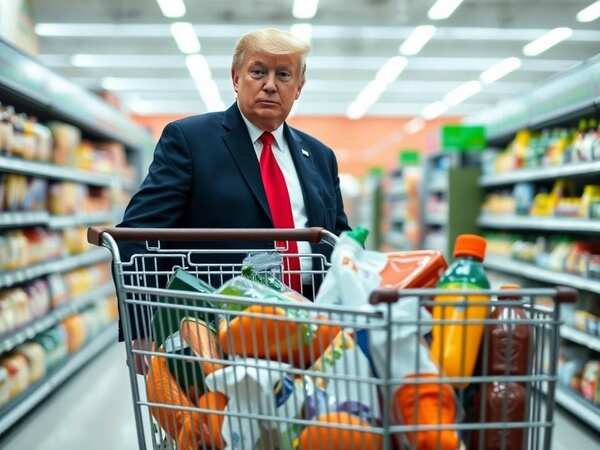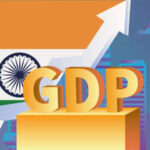NEW DELHI: India may strike a mini trade deal with the US, before Washington’s pause on reciprocal tariffs is lifted in early July and avoid the extra levies restricting market access to the world’s largest economy along with Asian peers South Korea and Japan, and several others.
Earlier than autumn deadline (September) for concluding the first tranche of the bilateral trade agreement (BTA) between the two countries, a mutual package may be finalised.
In the discussions between officials of India’s department of commerce and office of US Trade Representative (USTR) in Washington from April 23-25 both sides decided to look for “opportunities for early mutual wins”, the ministry of commerce and industry said here on Tuesday. The statement also called the recent in-person bilateral talks as “fruitful.”
While New Delhi hinted at an interim agreement, US Treasury Secretary Scott Bessent too said on Tuesday that the US is “very close” on a trade deal with India. He noted that “it is much easier” to negotiate with Delhi because of the “high tariffs” and said talks with the country are “moving well. He was addressing the press in the White House.
Bessent said Asian trading partners and allies “have been the most forthcoming in terms of doing the deals,” and added that Vice President Vance, who was in India last week, “made some very good progress” with Prime Minister Narendra Modi on this front. “So I could see some announcements on India,” Bessent said.
On Monday, he had said while many top trading partners have made very good proposals to avoid US tariffs, one of the first trade deals to be signed would likely be with India. He had also said that the first such trade agreement might come this week or next, without providing details.
PTI reported Bessent as saying on Tuesday. “I think that we are very close on (a deal with) India…India, in a funny way, is easier to negotiate than the many other countries because they have very high tariffs and lots of tariffs.” “So, it’s much easier to confront the direct tariffs when as we go through these unfair trade deals that have been put in over decades, that the non-tariff trade barriers can be much more insidious and also harder to detect.
Reuters had reported last week that South Korea and the US “agreed to craft a trade package” to before the the pause on reciprocal tariffs is removed. A senior South Korean government official however was reported as saying on Monday that Seoul would not agree to a trade package with Washington by the time the country holds a presidential election on June 3, and flagged challenges to reaching a deal even before early July.
US President Donald Trump, who announced sweeping reciprocal tariffs on a large number of countries, on April 2, announced a 90-day suspension of these tariffs a week later, except for China and Hong Kong. About 75 countries have reportedly approached the US for trade deals in the wake of the tariff threat.
While the 26% reciprocal tariffs on India is put in abeyance till July 7, a 10% baseline tariff imposed on April 2 is in force, besides 25% duties on steel and aluminium. The 10% duty is applicable on all countries barring Canada and Mexico, while Chinese exports face 145% duties in the US.
In the talks last week where India’s chief negotiator and commerce secretary designate Rajesh Agrawal led the Indian side, discussions centred around the pathway for concluding the first tranche of the mutually beneficial, multi-sector BTA by fall of 2025, the commerce ministry said.
One of the things working for India is that it has relatively open trade and fewer non-tariff barriers, US officials had said earlier.
Last week’s meeting followed earlier bilateral discussions held in March, 2025 in New Delhi. While productive sectoral expert-level engagements have taken place through the virtual format, in-person sectoral engagements are planned from end May.
The BTA was announced after a meeting between Prime Minister Narendra Modi and US President Donald Trump on February 13, the very day that the US unveiled its reciprocal tariff plan. Through the BTA and related measures both countries are aiming to increase their bilateral trade to $ 500 billion by 2030 from $ 200 billion at present.
Exporters also want the BTA to be expedited so that their shipments can continue to go to the US without any tariff major disadvantage after the 90-day pause expires. Because of the uncertainty, exporters are rushing their orders to the US to beat the higher tariffs.
The US has been vocal about its demands from New Delhi on agriculture, auto and overall trade deficit. In a statement on Tuesday, the US Trade Representative Jamieson Greer again stated, ““There is a serious lack of reciprocity in the trade relationship with India. These ongoing talks will help achieve balance and reciprocity by opening new markets for American goods and addressing unfair practices that harm American workers.”
Officials say that India too has certain asks from the US in the BTA. In some sectors like tobacco and peanut butter the US imposes very high tariffs and other restrictions. In textile, clothing and other items of Indian export basket too there is not much difference between Indian and US rates.
In 2024-25 India’s merchandise exports to the US grew 11.6% on year to $ 86.5 billion while imports grew 7.4% to $ 45.3 billion. This resulted in a surplus of $ 41.2 billion for India. To balance that trade one of the options that has been proposed is India buying more petroleum and defence items from the US.
Source: The Financial Express

 Indian Economy To Grow On Back Of Right Strategies: FinMin Report
Indian Economy To Grow On Back Of Right Strategies: FinMin Report 